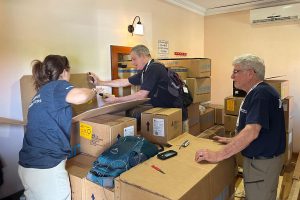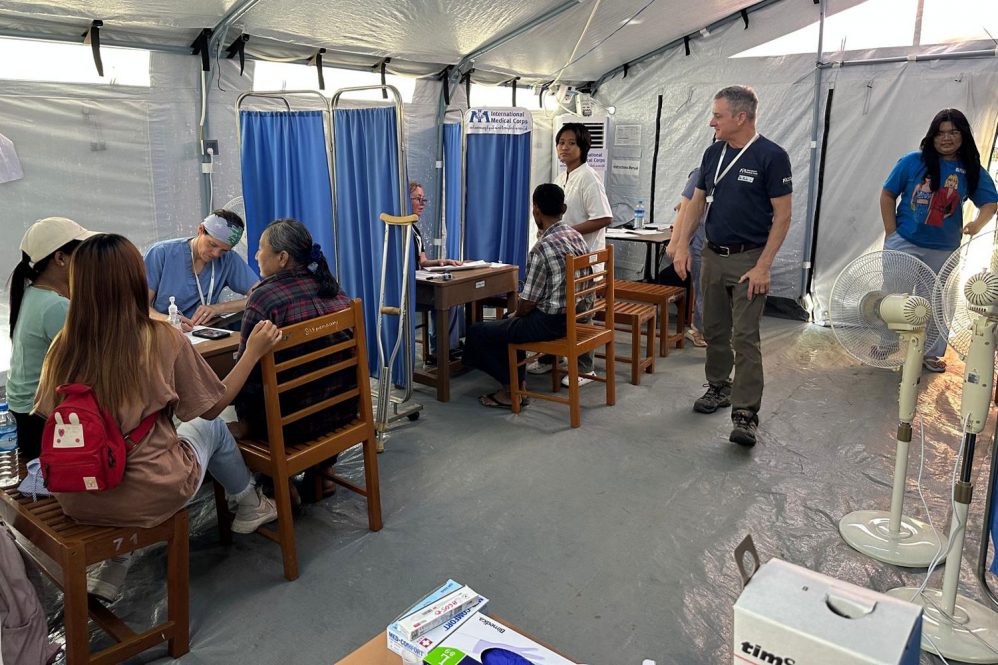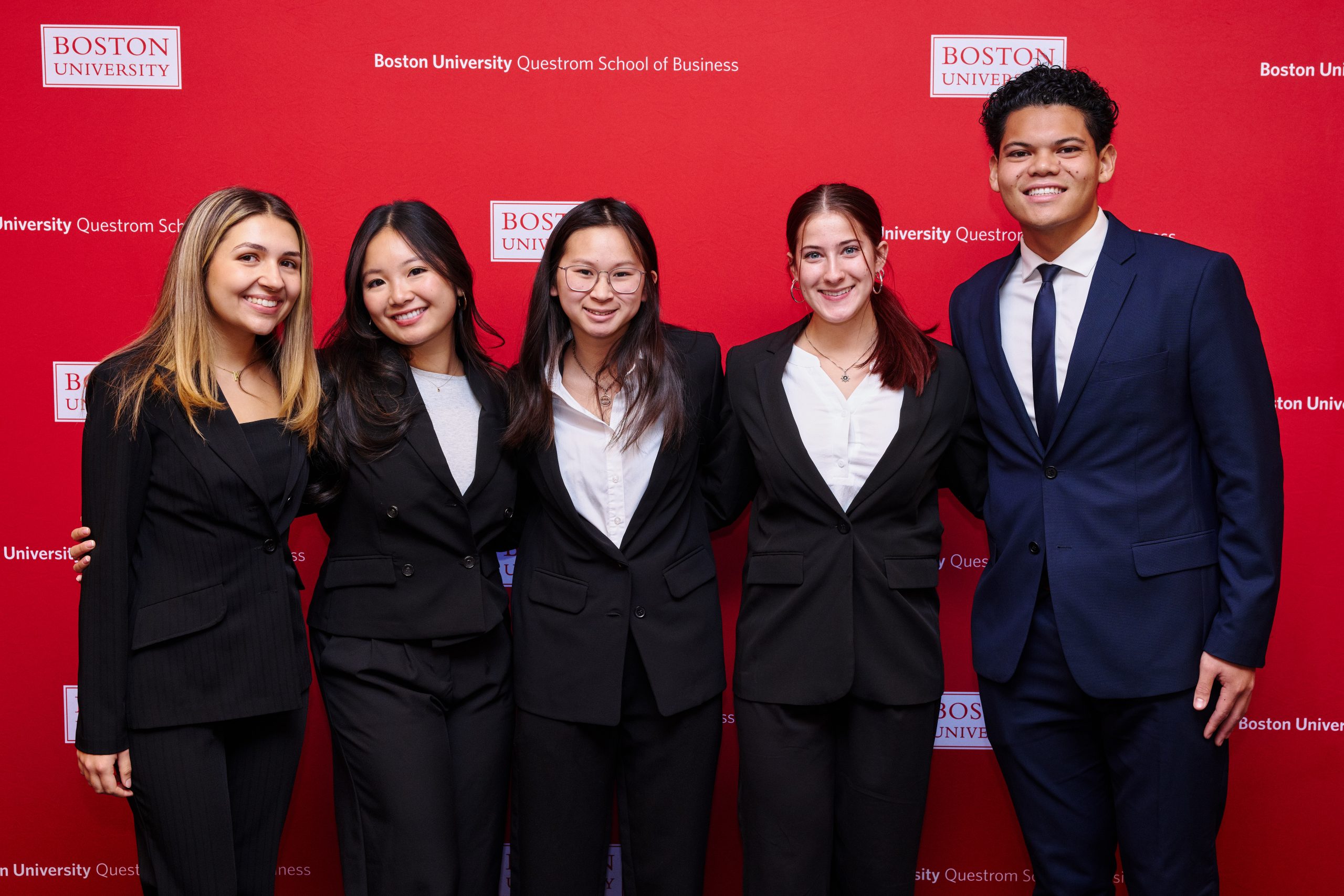Two UConn Health emergency medicine physicians are back from a medical mission in central Myanmar, which was devastated by a magnitude 7.7 earthquake March 28.

The earthquake and aftershocks are blamed for more than 3,700 dead and 5,000 injured, compounding the humanitarian crisis in a country already dealing with political unrest and an overwhelmed health care system.
“Suffice it to say that the external reporting is a 10x underestimate of the actual impact and fatalities,” Dr. Rob Fuller reported from the capital, Nay Pyi Taw, more than 150 miles from the epicenter. “There is much political difficulty in entering and moving here.”
Fuller, who is UConn Health’s chair of emergency medicine, and Dr. Caroline Lloyd, in her second year in UConn’s International Disaster Emergency Medicine Fellowship, were part of an International Medical Corps response team. The IMC’s response got off to a slow start, largely due to a reluctance by the Myanmar government to embrace assistance from foreign organizations.
“There had been a smaller team from IMC trying for several weeks to open the door to allow us to come in and form those relationships, and assure the government we weren’t going to do anything they didn’t want us do to,” Lloyd says.
Myanmar is located in Southeast Asia’s Indochinese Peninsula.
“[IMC] flew into Bangkok right after the earthquake, and it took days to get permission to enter the country,” Fuller says. “Then after they got into the country, they tried to get the ear of the minister of health to say, ‘We’re an aid-providing organization and we’d like to collaborate with your responders,’ and it took a long time to get those OKs. And then the minister of security and the minister of foreign affairs had to approve. By the time all those barriers were out of the way, we were one of only two foreign non-government organizations allowed in to provide some health care.”
Lloyd and Fuller didn’t arrive until April 19, and by then the mission was to run a tent clinic in place of a key piece of health care infrastructure in Nay Pyi Taw that was lost to the quake.
“We were working at the site of a destroyed 300-bed hospital,” Fuller says. “We were seeing about 100 patients per day. The patients were seeking care for acute and chronic conditions as well as injuries related to the earthquake.”

“It was primarily handling outpatient care that they normally would have handled, with a smattering of patients sometimes popping in due to displacement or injuries that happened during the earthquake,” Lloyd says. “Every once in a while you’d get someone displaced by the additional conflict going on within the country, who had recently gotten out of that area and into this more-controlled governmental area. But overall, it was primarily outpatient. Lots of aches and pains.”
Lloyd served as a medical lead, overseeing clinic design, patient flow, and quality of care. Fuller says she was looking inward, to manage the clinic, while his role, as medical coordinator, was outward-looking, toward the community and other responding agencies.
“I didn’t have to do a lot of it, because there weren’t a lot of agencies to coordinate with, it was so controlled and closed,” Fuller says. “So I just did what Caroline told me, and saw patients under her guidance.”
Lloyd was there for a week, Fuller for two. They say the temperature was mostly in the triple digits.
Fuller was part of a team from UConn Health that responded to Ground Zero on Sept. 11, 2001. Since then, he has been part of IMC responses to disasters all over the world, including a tsunami in Indonesia, an earthquake in Haiti, a hurricane in St. Lucia and a typhoon in the Philippines.
This was Lloyd’s first overseas disaster response.
“I was in charge of staffing, the flow of how our tents worked, troubleshooting and changing things,” she says. “If we were in an enclosed area, we can’t have people who are coughing or have an infectious disease, how do we change our flow? They’re putting them in a different area, but then no one’s telling us that’s happening, so let’s have a discussion and fix that. Kind of the logistics of how it worked.”

Lloyd says a physician who had done work with the IMC in Gaza told her this response was more complicated because of the controlling nature of Myanmar’s government.
“It’s one of those experiences where, now that you’re kind of removed and you can look back on it, you’re like, ‘If this is how this worked in probably one of the most difficult situations I think you could imagine, man, what’s it going to be like to do it in an atmosphere where someone actually legitimately wants you there?’ IMC has pallets and pallets of things that they have ready to come in; we couldn’t get any of those,” Lloyd says. “The government just didn’t let them in.”
The experience comes as Lloyd nears completion of her disaster emergency medicine fellowship and her Master of Public Health studies. But she won’t be gone from UConn Health for long; in August she’s returning as a faculty physician.
“This was an opportunity for Caroline to be able to go into a disaster,” Fuller says. “Every disaster’s got its own problems and its own flavors. This is just one, but this very controlled political environment was probably the weirdest part about this one. We were controlled where we can go, and what we can do, and how we operate was very managed by the political entities that we were working with. But even so, we set up tents in what was a field, we used car-park areas with tarps around them to deliver care for a couple days. Caroline was in charge of the campus, so she designed how the patients moved from place to place and how we cared for them and where things were. So it was a great experience for her.”



